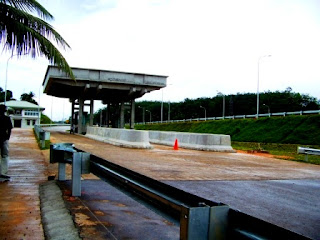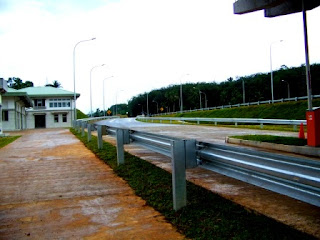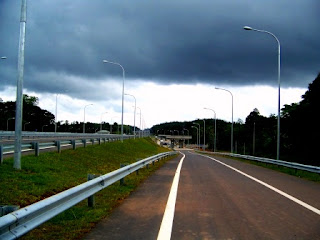Rem Koolhaas
is an architect and a writer whose style of lustrous, he was fascinated not
only the architecture he himself acquaint as a philosopher. His contribution to
mankind as an architect is not substantial, but his philosophy of architecture
is much more interesting than ugly design principals derived by the great
Le-Corbusier. Perhaps his vision and mission was not about the tangible built
environment his vision was to derive the emotions, feelings and intangible
qualities of the life and architecture. He always expresses the idea of a place
rather than an idea of a space. Delirious New York: A Retroactive Manifesto for
Manhattan is intemperately-illustrated with details shows his intention and
skills; as an architect who is capable of presenting anything via illustrations
rather than words. His approximation of demonstrating idea is dandier for
oodles extents. Which made the book Delirious New York: A Retroactive Manifesto
for Manhattan is much shorter considering the fact that the argument which he
is trying to build by the book. This is not a norm at all that the architecture
books are full of illustration and drawing, but the book itself making the
strong arguments to perceive and proceed. For the establishment of the theory
which he was going to produce, he produced few examples. Most of them are
American town model such as New York Manhattan etc. He habits as case studies,
such as
1_ The Waldorf-Astoria Hotel Coney
Island,
2_ Rockefeller Center,
3_ The Empire State Building
4_ The Downtown Athletic Club now a
residential building,
5_ Radio City Music Hall
6_ Diego Rivera's unfinished murals for
the RCA building
7_ Rockefeller Center
Most of them
are well developed and finished town designs. And the interesting side of these
case studies is they were designed long time ago when the current age wasn’t
decided to born. But he doesn’t aware of the fact that it was built in the past
and he complains that the public demand is not such nor the precise decision
for the place.
Published in
1978, the book starts with explaining the history of the location. He tried
proving the olden theory that the golden past creates the exuberating present.
The author on the spur of the moment focus into the birth of the Manhattan town
and informing the reader that the town discovered in 1609 and it was planned
under utopian theories of town planning. Addition he is manipulating the
readers’ mind that the British planner is responsible for everything happened
and happening. The ingrained the idea of unsounded of the British planner helps
him to focus reader to the implementation of the grid system. He indicates that
the grid system was applied to the Manhattan in 1811 without understanding the
history, context spatial control and the rough nature of the place. His
criticism of the grid system in the book is contrasting. But which Is not
strong enough to make a conversation or an argument.
Koolhaas
pointing to the British planner; thus the success of the two dimensional
discipline in primitive planning is not applicable in three dimensional
planning. The permittivity of the two dimensional decision making process
doesn’t utilize the practical paradigm reality of the place. Then he connect
the two dimensional idea of planning and grid system. He identifies the utopian
planning has a relationship to the grid system. He says the strategy behind the
grid system is for falsifying the population for commercial industrial
purposes. The criticism of the grid system is continues throughout the entire
book. He himself impose that the grid system is much more technical element at
the non-technical feeling of the mankind. Then the reader is brought into the
Manhattan experiments and discoveries. He says that the Manhattan is an
architectural lab or a zoo.
Hence the
grid system is placed to simplify the design of the urban context. But then he
reproduces an idea that the grid system was alienated to the American town by
their general law of speed. “America is all about speed”, President Roosevelt. But
in fact the grid system is introduced to the town planning by the ancient
Sumerian architects those who have excelled the profession of making town
according to the grid system five thousand years ago. They are the people those
who have started planning the town. However the idea of the grid system is that
the town is very well planned and arranged in order to make the town safer and
efficient for the public user. His promotion of that idea makes conflicts
between the user of the town and architecture of the town. He himself calls for
aid at the New York architecture pollution. He describe the situation of the
country shall help to evaluate a system which helps to develop a methodology
which helps to evaluate the methods of the system that help to produce the
architecture. The book acclivities the idea of the place with its qualities
such as the best spatial qualities is in inevitable for the New York.
He added
that the technological advances such structural abilities elevator techniques
spark with the grid system to abolish the geographical and contextual
consciousness. This is a brand new hypothesis when it comes to the readers mind
suddenly. He explains that the emotional barriers are destroyed by the
technology. Koolhaas explains it as an additional method of escaping from the
place ‘mass ascension’ (moving upward). Supporting that theory he explains the
demand of the recreational spaces are imperative due to the demand of the
escape from the place. But he abstract that the recreational spaces are
illusion way of escaping from the metropolis. But he forgot to contrast the
idea of escaping from the city and utopian design demands of a place. Perhaps
he is not conscious enough to combine his argument with all the information
provided in the book.
Enhancing to
that, he boil down Coney islands as the perfect environment. He explains the
Coney Island is a perfect place to escape and celebrate the delirious urban
life style. The mutation of the nature makes the artificial more attractive.
The ground of the island is welcome more people and makes the miracle of the
nature with artificial environment. The idea of a dreamland concept is
materialize by Coney islands in order to rest the delirious life style of the
Manhattan people.
Achieving
the utopian life or theorem formulated in 1909 in American minds. It is still
lingering in the collective subconscious of the political and public minds of
the Americans. According to which the Koolhaas identifies the skyscraper as an
artificial space for that to achieve. As Koolhaas articulates, the Skyscraper
represents the meeting of three urbanity revelations:
1_ The reproduction of the world
2_ The annexation of the tower
3_ The block alone
Koolhaas envisioned that the street grid
system of Manhattan and the town system are overcrowded with people and
buildings. He enunciates the town is overcrowded and no place for think. Which
he introduce the hypothesis “the culture of congestion”. Besides as what he
anticipated the "Culture of Congestion", formulated with the culture
of the city, alimentation off each other. Represents a perceptive grading of
Manhattan as a congested city and architectural test-ground, a research lab for
the invention and implementation of the fundamental theories and visions that
determined the metropolitan life style reach its current fabulous position. The
fashion of delirious ness or the craziness is not an impact of architecture. If
it is an impact from the architecture the rock and roll should have born in
Manhattan not England. The culture or the architecture doesn’t exit exclusively,
but their interrelation ship should have identified very sensitively without
any repulsion. Hence the hallucinating life of Manhattan is not a direct product
of the Manhattan utopian planning march.
The
hypothesis was that the culture made the city or city made the culture. This
argument comes from not only city architecture but also regional architecture
where the specific places have specific details. But the Koolhaas cool argument
doesn’t answer lots of questions. And also rationally if the city makes the
cultures then; who made the city?
Therefore
the paradigm of his vision which reflected in the book is not strong enough to
make a foundation for bigger conversation. Via the entire book he is trying
institute a conversation “whether man created the City” or “City created the
culture”. All the details in the book are transcendent to illustrate these
ideas and argue met which wanted to produce. But in some text he lacked the
sense of strong controversy. He orders the justice and raise questions which
really don’t need to answer. The estimate delirious him mad was that the town
was developed before the generation arrival. And the generation follows
environment and the culture given by a congested town grid system. Which is in
fact Koolhaas intimately detects the Metropolis’s restless streets as products
of population congestion. All the interchangeable with same hierarchy to follow
the grid system which allows enhancing the production of the city. His filch
view describes a level of population density which the earth can town holds
onto. He articulates a hypothesis which helps to understand the realm of the
grid system in the Manhattan. He proposed the idea of the speed which made
American mind mad gave the birth to these mega towns. Perhaps according to his
view New York is an example of that ambitious product of mankind.
Koolhaas
construct many arguments via the book. None of them are methodological neither
substantial to the concept of the book. Formerly he is repeating the same
concept in many terms in order to clarify and explore another concept. He says
the culture develops with response to the architecture of the place. But then
again he raises the question; whether architecture made the culture or the
culture made by architecture. This is dizzy when it comes to the readers mind
that the writer is not strong enough to defend his own arguments. Perhaps he
should have reviewed his own book again and again in order to clear the mess of
ideas which he was trying express via the book.
The most
interesting weakness of his argument is his vision or the hypothesis about the
macro scale designs. The miracle of the architecture and culture verse via is
not explained or established when it comes to the macro scale urban
developments. The comedy of bringing many concepts together becomes more
visible and understandable in that part. May be the Koolhaas took a long time
to understand and theorize the idea. But which is ok to provide many hypotheses
under one theory. But for develop an argument which is not professional to do
so.
The end
occurs in an interesting manner, Koolhaas placing the development of the
Manhattan and compares it with great Architect Le Corbusier. And he explains
the panoramic view of the Manhattan town as an n imagery abstract product of
Salvador Dali and Le Corbusier. Salvador Dali brought the imaginary concepts
and dreams into the fantasy. The rational of his fantasy is not the same as Le
Corbusier’s ideas. Hence the Koolhaas cooled down express his capacity of
imagination. Then he introduces an impossible fantasy, a brain storm for the
reader to imagine something that the architects only imagine where he starting
to accept the contradiction which he had brings to the conversation table of
the reader. However the imaginary fantasy he tried bring has some utopian
concepts. They are nearly based to derive the human demands and place. He is
trying to justify the idea of his fantasy is part of cultural evaluation. But
in fact most part of his fantasy based on classic demands of humans and
resolving general urban issues of the human civilization.
Therefore
Delirious New York: A Retroactive Manifesto for Manhattan is manifestly utter
failure in terms of fabricating an argument in the society. Or it is book with
scattered ideas and concepts. Hence the solidness of the reader should have
considered by Koolhaas more than what he tried explain and he should have tried
to establish and strong and contrasting argument in the readers mind.



























